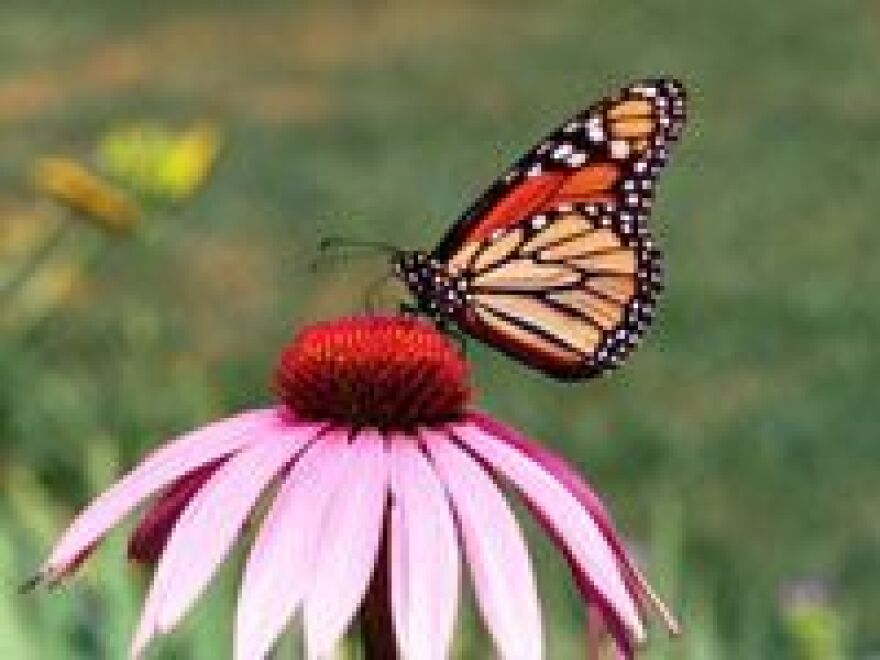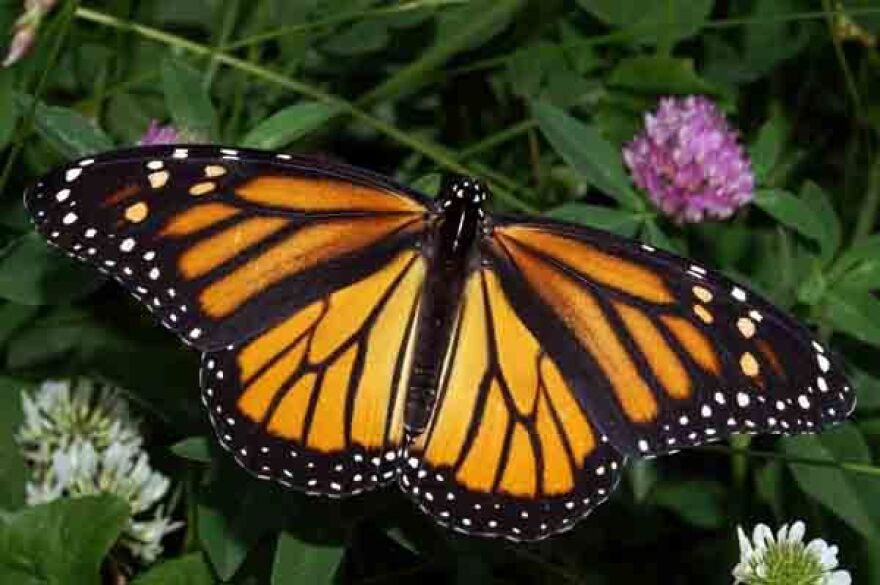Early June is the time of year we should begin seeing the monarch butterfly fluttering about our flowers and plants in central and western New York. But, scientists are worried that a sharp decline in the population of the iconic insect could cut back local monarch sightings dramatically, or end them all together.
When you think about it, the migration of the monarch butterfly is pretty amazing.
"Here you’ve got an insect that weighs as much as a paper clip, and it can fly two and a half thousand miles. That’s remarkable," said Ernest Williams, a biology professor at Hamilton College.
Williams says that trek from central Mexico, where the butterflies spend the winter, to summer sojourns up north, is in danger. A decline in the winter monarch population has been well documented.
“If we go back about 20 years ago, in about 1994, there were about 50 acres of over-wintering grounds in Mexico. This past winter, it as about one and a half.”
Williams says logging in Mexico is diminishing the forest that keeps them warm. But that’s not the only issue here. To understand the migration, you have to follow milkweed, the favorite food of the monarch. Williams says the expansion of genetically modified crops in the Midwest and the herbicide used in their management has taken away many of the plants that provide sustenance to butterflies and their larvae.
“The glyphosate herbicide kills other plants, not the genetically modified corn and soybean. As a result, milkweeds have declined through the Midwest," said Williams. "One count assessed we’ve lost 60 percent of milkweed in the prime breeding area.”
Williams says that means fewer of the orange and black butterflies will make it up to western and central New York.

"Last summer people all across the state and area, were talking about not seeing monarchs. In fact, here I am, somebody who works with monarchs, the first monarch I saw, was in October.”
So what can be done? Enter the Nature Conservancy of Western and Central New York. Director Jim Howe says they’ve worked to create safe habitats for butterflies in areas like the Rome Sand Plains. And it's something homeowners can also do.
“People can build a butterfly garden in their yard. There’s lots of lists; you can go online and see what are the lists of plants to put in the ground for butterflies," said Howe. "Butterfly weed, and milkweed, and also bee balm, really attractive flowers that people will like. We’re actually doing that in one of our preserves near Rochester, putting in a butterfly garden.”
One other issue here in upstate New York, says Howe, is the proliferation of an invasive species called swallow-wort.
“When monarchs lay eggs on swallow-wort, for some reason, the monarchs do not survive. So we are building coalitions of like-minded organizations and people to eradicate swallow-wort; to find solutions whether it’s some kind of control to keep swallow-wort out of our habitat so monarchs can survive," said Howe.
Political activism is another avenue. Activists oppose federal support for the corn ethanol industry, that’s squeezed out much of the Midwest’s milkweed.
In the end, Williams says monarchs won’t die out, but their remarkable cross-country journey is in danger. And beyond the economic and educational importance of the butterfly, it would truly be a loss.
“As others have said, what if we had only one Beethoven symphony, rather than what we have. Our life would be diminished a little bit. Our life will be diminished if we lose this migration.”



